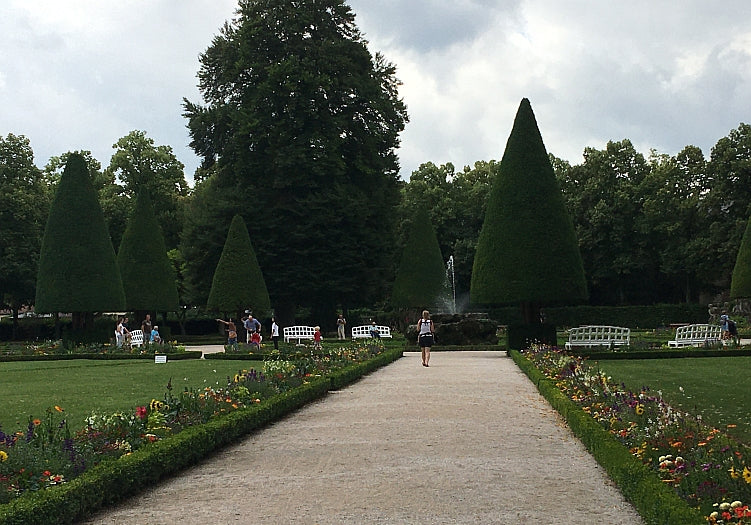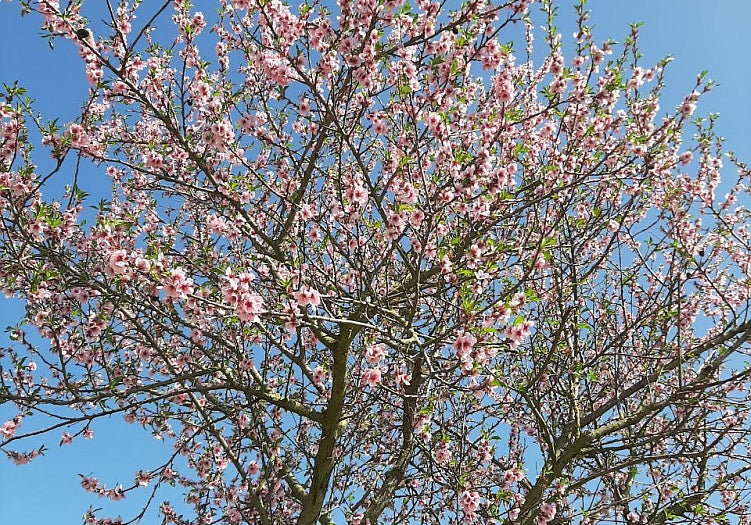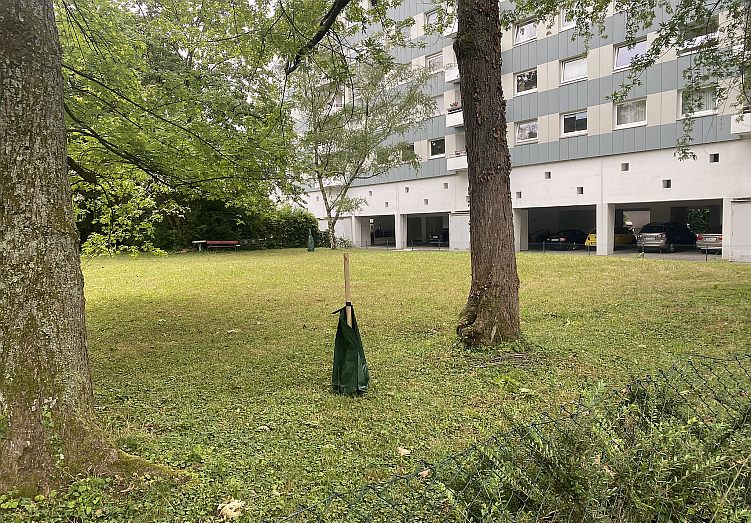Your shopping cart is currently empty.
| Subtotal | €0,00 |
| Shipping Rate | including VAT, excl. Shipping Rate |
| Total | €0,00 |
|---|
05.11.2023
Trees shade cities and cool them down through evaporation. Trees help cities deal with the two biggest meteorological challenges of climate change: Higher temperatures and extreme precipitation events.
Trees are therefore an important component of urban climate adaptation strategies. But trees also suffer from climate change, rising temperatures and longer dry periods. Your cooling performance depends on the water supply. When trees suffer from a lack of water, they can no longer cool efficiently. They are also more susceptible to diseases and pests. Spruce trees, for example, use resin to repel bark beetles and require water to do so.
And city trees have difficult conditions anyway: Higher temperatures than in the surrounding countryside, sealed surfaces, scarce root space, road salt.
The climate is changing and this is becoming more and more visible. Christian Hönig, tree protection expert at Federation for Environment and Nature Conservation Germany writes:
"For the third dry year in a row, there is a risk of long-term damage to the avenue, street and park trees."

The challenge of climate change
Many city trees already have problems dealing with the current climatic conditions. We have to expect that the problems will only get worse. The German Federal Environment Agency assumes that the global average temperature will rise by 2100 to 1,8 degrees Celsius by the year 4,0.
The city trees must therefore meet the climatic conditions of the future. And that means: longer dry seasons and higher average temperatures.
Here I want to refer to the subject City trees of the future mainly focus on the aspect of tree species. To ensure that cities continue to have a healthy tree population in the future, other measures are important: adapted irrigation, larger areas for rainwater to seep away, larger spaces for rooting. In addition, plant communities and good green networks are increasing.
Tree species for the future
Which trees can survive the increasingly hot and dry summers - and at the same time cope with frost?
The forest scientists Andreas Roloff, Stephan Bonn and Sten Gillner have the Climate species matrix worked out. This list contains urban tree species and shrubs that meet both criteria.
Some examples of native urban trees and shrubs that are both hardy and drought tolerant:
- Field maple
- Gray alder
- Common juniper
- Forest pine
- Baden mountain ash
- Common rock pear
- Rock cherry
Some examples of non-native urban trees and shrubs that are both hardy and drought tolerant:
- Ash maple
- Red cedar
- Common hop beech
- Black pine
- Two-tone oak
- Common Robinia
- Manchurian linden
- Siberian elm
However, every city is climatically unique and has its own peculiarities. Therefore, such lists can only serve as a guide.
There are also additional criteria: the silver linden tree and the oak tree, for example, can both cope well with increasingly extreme climatic situations. However, the silver linden tree tends to break branches and the oak tree reacts sensitively to compacted soils and road salt. So there are many factors to weigh in order to choose the right trees for a particular location.
A helpful tool for this is citrus, a database for urban trees. Suitable tree species can be identified here by entering requirements and conditions.
Biodiversity for the city of the future
Drought-resistant trees are central to the cities of the future. Another key factor is biodiversity. Only a high diversity of tree species can ensure a healthy tree population. Currently, three to eight tree species make up the majority of street trees in most German cities. If one of these types of trees is attacked by pests or disease, much of the street trees throughout the city will be affected.
Biodiversity helps to minimize the risk of many trees becoming sick at the same time. Diversity is therefore essential for a resilient tree population.
Species diversity in urban trees also helps to increase urban biodiversity. Trees are small ecosystems that generally increase biodiversity. Insects, birds and small mammals find food and suitable habitats in trees. Likewise other plants and mushrooms. The more trees there are in a city, the greater their diversity and the better they are interconnected, the higher the cities' biodiversity. As urbanization progresses, urban biodiversity makes an important contribution.
What do cities have to do with biodiversity?
The scientists Ingolf Kühn, Roland Brandl and Stefan Klotz have in one Study found that in Central Europe with urban areas of 100 km2 (roughly the size of Heidelberg) and with over 200.000 inhabitants there are on average around 1000 different plant species. The researchers emphasize that urban regions far exceed the biodiversity of the intensively used cultural landscape.
 The network BioFrankfurt writes that fern and flowering plants are common in the Frankfurt area in 1675. For comparison: In the 1250 times larger Taunus Mountains there are only XNUMX plant species.
The network BioFrankfurt writes that fern and flowering plants are common in the Frankfurt area in 1675. For comparison: In the 1250 times larger Taunus Mountains there are only XNUMX plant species.
Cities are real biodiversity hotspots. But why place so much emphasis on biodiversity? BioFrankfurt writes:
"For people, biodiversity is one of the most important foundations of life and a guarantee of quality of life, from which we depend or benefit in many ways."
And the extinction of species is one of the most pressing problems for mankind.
City trees can make a valuable contribution here, along with all the other important contributions. And biodiversity can also have a social dimension: trees as modern urban commons.
City trees of the future
Another interesting question regarding city trees of the future could be:
Which trees create additional added value for the local ecosystem and the local people?
In the future, for example, trees in parks could be selected more so that they also fulfill social functions. Cities could increasingly plant walnut, apple or fig trees in their parks and thus create places where people can relate more closely to the green spaces. A prominent example of this is the Edible city of Andernach. Andernach has planted edible trees, shrubs and vegetables on its green areas with the aim of making public green spaces more creative, also taking into account a difficult household situation and promoting urban biodiversity.
A prominent example of this is the Edible city of Andernach. Andernach has planted edible trees, shrubs and vegetables on its green areas with the aim of making public green spaces more creative, also taking into account a difficult household situation and promoting urban biodiversity.
As a result, these public facilities became meeting places for people of various ages and cultures.
What do you think of this idea? Create places where people can meet and reconnect with nature and food? Such places could raise awareness of how our parents and grandparents grew some of their own food. It could be beneficial for many cities to rely more on local systems again and to involve the public in this work through tree commons.
Andrew Hunkeler
Dipl. Social and cultural anthropologist with a focus on sustainable and participatory green space design in cities. (More about the author).
My vision is to bring together: people and trees, nature and culture, population and urban authorities.
If you have any questions, suggestions, interesting stories or exciting knowledge on this topic, please write to me: andreas@baumbad.de. I'm looking forward to your message!
Do you want more tree knowledge?
That might interest you
Great idea, easy handling and everything from ordering to delivery.
Michael K.






















